Critical thinking is a cognitive process that involves the ability to analyse, evaluate, and make judgments based on information, arguments, and evidence. It’s a fundamental skill that is essential for individuals to make informed decisions and navigate the complex world around them.
In today’s society, critical thinking is more important than ever as we are constantly bombarded with information from all around. We must take in that information and evaluate it properly before making any decisions. This process happens every day at home, at school, and at work. People who are able to think critically are more decisive and are often able to make better decisions.
Critical thinking is a teachable skill. Considering how necessary it is to daily life, this is a skill that should be taught to students in order to help them achieve more in their academics as well as preparing them for life after schooling.
The process of critical thinking involves several key components, including:
These are individual skills that can be learned in a classroom setting and applied in all areas of life. Students learning how to think critically should be open-minded, considering issues from multiple perspectives. This is the best way to solve complex problems.

When you push students to practice critical thinking skills, it helps them to be more engaged in their learning as they see each issue from a unique perspective. Students will ask better questions and get more out of learning materials.
But, one of the main reasons why we need to teach critical thinking is that it’s essential for individuals to be able to navigate the complex and rapidly changing world around them. Technology has dramatically shifted every area of our lives, allowing information to spread more quickly and bringing new opportunities to many people. With this comes many challenges as well, including information overload and misinformation.
Students must be able to interact with the constant flow of information in a healthy, consistent way. They should be able to weed out bad or irrelevant information, focusing on what’s accurate and useful. For example, in the digital age, as students are constantly exposed to news articles, social media posts, and other forms of information online, it’s essential that they have the ability to evaluate the credibility and accuracy of this information.
This will ensure that students are learning from good sources instead of trusting all news and information, regardless of the source. Critical thinking is essential for problem-solving and decision-making, since these both rely on the quality of information you have and how you evaluate it.
Critical thinking is essential for personal growth and development as it allows individuals to question their own beliefs and assumptions and to consider different perspectives. In an increasingly connected world, this is a valuable skill that promotes working together.
Critical thinking is also an essential part of communicating effectively. It allows individuals to understand and communicate complex ideas and information, which is essential for collaborating and working with others. Furthermore, critical thinking is essential for individuals to be able to navigate the political and social landscape, as it allows individuals to evaluate arguments and make informed decisions about political and societal issues.
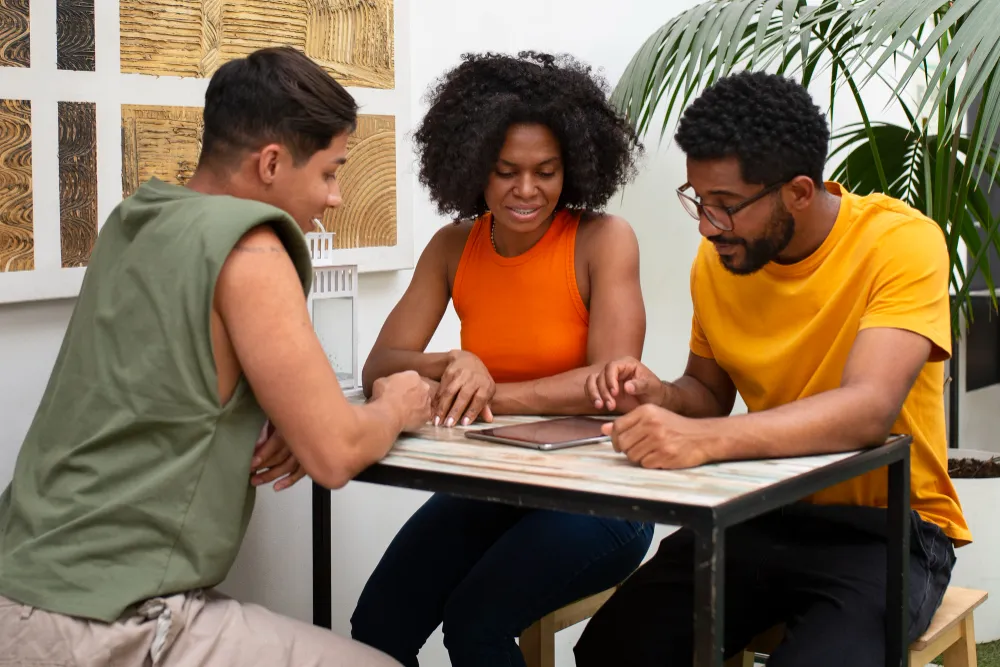
Lastly, critical thinking is essential for individuals to be able to make sense of the world around them. The world is complex. In order to make the most sensible decisions that lead to the best results for the most people, students need to be trained in critical thinking. When these students graduate and take their place in the workforce, in politics, in families, and elsewhere, they’ll be better prepared to move through the world making wise decisions.
Many parts of a student’s life are impacted by critical thinking. It’s a fundamental skill that’s essential for individuals to make informed decisions and navigate the complex world around them. Critical thinking is essential for problem-solving, decision-making, personal growth, and effective communication.
It’s essential that we teach critical thinking to individuals of all ages, starting as early as possible. The sooner students can learn to analyse situations and respond appropriately, the better prepared they’ll be to take on challenges throughout their lives.
Creating an inclusive classroom is essential for providing an equal opportunity for all students to learn and succeed. An inclusive classroom is one where all students feel safe, respected, and valued, regardless of their race, ethnicity, gender, religion, or any other characteristic that might make them different from their peers.
To create an inclusive classroom, educators must recognize and acknowledge the presence of diversity within the classroom. This means that educators must be aware of the different backgrounds, cultures, and experiences that students bring with them to the classroom. This awareness can be achieved through professional development, cultural competency training, or other forms of education.

Since the goal is to acknowledge different backgrounds, needs, and cultures of the students in the class, educators should not make any assumptions about students. Once educators are aware of the diversity within their classroom, they can begin to create a curriculum that reflects and celebrates this diversity.
Just as important as acknowledging diversity, educators must foster a classroom environment that’s safe for all students and respectful of all backgrounds. This means that educators must establish clear expectations and rules that promote positive behaviour and discourage bullying and discrimination.
While teachers have some control over what happens in their classrooms, they cannot control what happens to students outside of the class. Give students a haven where they can learn and interact with others without fear of discrimination. Educators can create a safe environment for all students by providing resources and support for students who may be experiencing bullying or discrimination.
Another way to promote inclusivity in the classroom is to provide opportunities for students to learn about and interact with different cultures and perspectives. This can be achieved through the use of multicultural literature, field trips, and guest speakers.
When students lack understanding about others, they are more likely to discriminate against them, whether intentionally or not. Educators can foster a sense of empathy for others by educating students about different people groups and allowing students to tell their own stories.
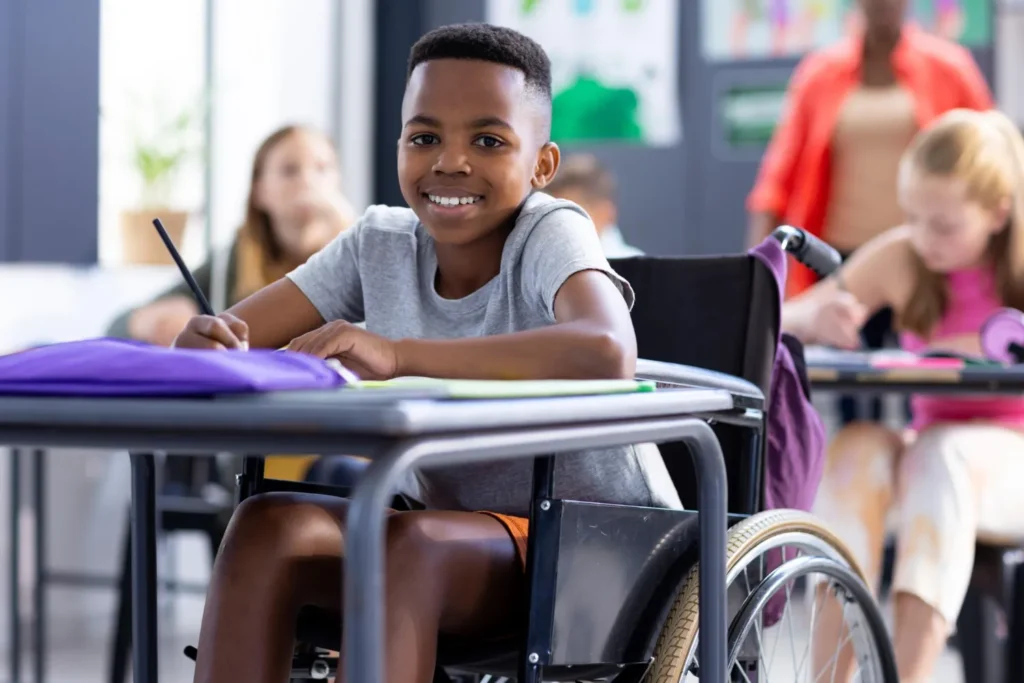
Educators can also provide opportunities for students to collaborate and work with their peers from different backgrounds. This helps to build understanding and respect for diversity and promotes a sense of belonging for all students.
Additionaly, inclusive classroom environments provide support for students who may need additional assistance. There cannot be true diversity if students with special needs are not accommodated. This can be achieved through simple modifications to the lessons, such as extra time for assignments or the use of assistive technology.
Educators can also provide support by creating a learning environment that is accessible to all students, regardless of their abilities. Examples of this might be setting up special seating for students with movement disabilities or creating lessons that utilize multiple forms of teaching rather than just lectures. The more flexibility that instructors can offer, the more students will be able to thrive in their classrooms.
Finally, creating opportunities for students to lead and take ownership of their learning promotes inclusivity in the classroom. Educators can do this by providing opportunities for students to participate in leadership roles, such as class representatives, or by providing opportunities for students to design and conduct their own research projects.
Allowing students to participate in leadership roles gives them more freedom to express their own ideas in a safe and controlled environment. This helps to build confidence and self-esteem and promotes a sense of belonging for all students as they learn to work together with their peers and consider each other in decision-making.
Creating an inclusive classroom provides an equal opportunity for all students to learn and succeed, regardless of their background or abilities. Students will be able to take strides in their education without fear of discrimination, knowing their teachers and peers will be supportive.
By creating an inclusive classroom, educators can ensure that all students feel safe, respected, and valued, and have the opportunity to reach their full potential. These 5 actions are only part of what it takes to create and maintain an inclusive classroom environment, but by starting with the foundational changes, educators can begin to see a difference in their classrooms.
There’s a common belief that some students are difficult to teach or manage in the classroom. However, this belief is misguided and harmful to both the students and educators. The idea that there is such a thing as a difficult student implies that the student is the problem, rather than recognizing that there may be underlying issues or circumstances that contribute to their behaviour.
It’s important to understand that all students are unique individuals with different backgrounds, experiences, and needs. Labelling any student as difficult does nothing to address the issues the student faces and may actually hinder their learning.
Each student may have their own set of challenges or struggles that affect their behaviour in the classroom. For example, a student may be dealing with trauma or mental health issues. Their behaviour may be a manifestation of these underlying issues.
It’s not fair to label them as difficult and expect them to change their behaviour without addressing the root cause. While learning institutions cannot realistically solve all student issues, there’s a benefit to identifying the situation causing students to have difficulty learning. Having an understanding of a student’s circumstances allows teachers to adapt to their needs and making learning more accessible to them.
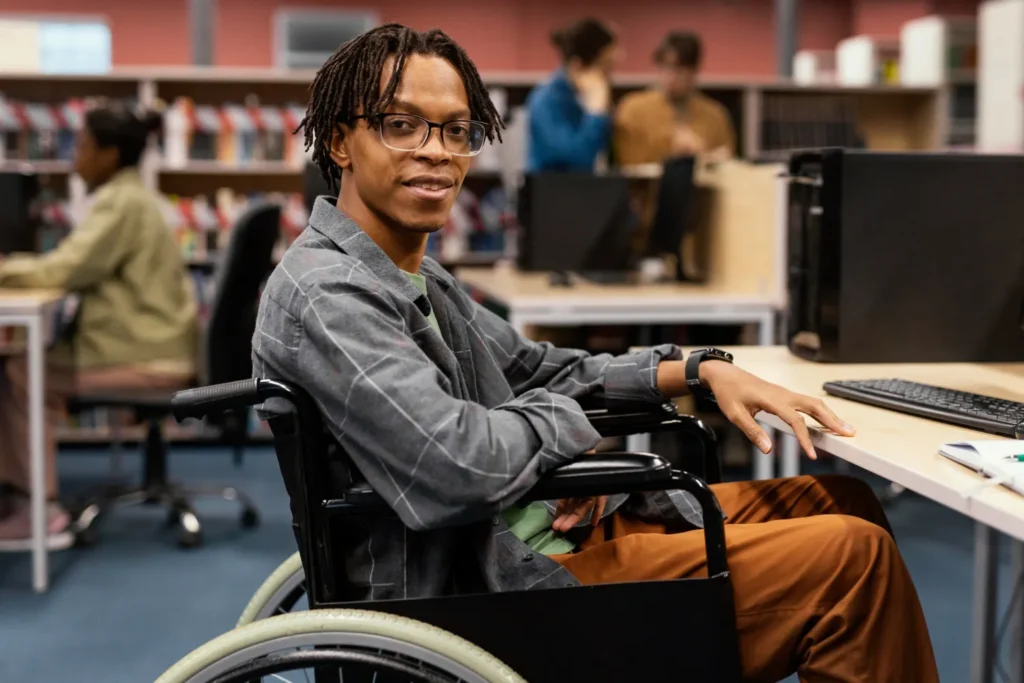
Another factor to consider is the learning style of the student. The way a student behaves in the classroom is often a reflection of the environment and teaching methods being used. If a student is disengaged or disruptive, it may be because they are not being challenged or engaged in the material in a way that’s meaningful to them.
Instead of labelling the student as difficult, educators should take a step back and evaluate their own teaching methods to see if there’s a way to better reach and connect with that student.
This method has a compounding benefit for students. The earlier a student can be engaged in their learning, the better they’ll be able to perform in the long-term. Students who have difficulty learning from traditional methods early on will not have the foundational knowledge they need to build their skill later. By helping students to be more engaged in their learning from the start, teachers can set them up for success in the future.
Negative labelling can have a severe negative impact on their ability to learn and interact with others. The way that society views students who are labelled as difficult can have long-lasting negative impacts on their self-esteem and future opportunities.
When students are labelled as difficult, they’re often seen as a problem to be fixed rather than as individuals with potential. This label draws attention to a perceived weakness, rather than acknowledging the student’s strengths. This focus on the negative can lead to a self-fulfilling prophecy where the student begins to believe that they are indeed a problem and give up on their own education. They will believe it’s impossible for them to learn well and succeed in education.
Moreover, labelling students as difficult can also negatively impact their relationships with their peers and educators. When a student is labelled as difficult, it can create a negative perception of them in the classroom, leading to further disengagement and disruption. It can also lead to a lack of trust and communication between the student, the teacher, and the parent, making it even more difficult to address the root cause of the student’s behaviour.
Students may also be isolated from their peers because of the perception that they will be a bad influence on others. Other students may not want to associate with the students who are considered to be difficult, leading to social stigma that will impact them for years.

There is nothing like a difficult student. All students are unique individuals with different backgrounds, experiences, and needs. The way a student behaves in the classroom can be the product of a wide variety of factors, including their home environment and learning needs.
When students are labeled as difficult, their issues are not addressed and they are set on a track that can lead to even more difficulty with learning later on. These long-lasting negative impacts can be avoided by giving students the attention they need to thrive despite their difficulties.
Educators should take a step back and evaluate their teaching methods to see if there is a way to better reach and connect with students individually. Instead of labelling students as difficult, educators should work to understand and address the underlying issues that may be affecting their behaviour. Teachers can then make simple adjustments to give these students a better chance at learning.
Rather than labelling difficult students, it’s better to provide them with the assistance they need to thrive. Taking steps to assist students who have difficulty learning can have a life-changing, positive impact on their education, whereas negative labels can affect a student’s ability to succeed in education.
An innovative classroom is one that’s constantly evolving and adapting to the needs of its students. It’s a space where creativity and critical thinking are encouraged and where students are empowered to take ownership of their own learning.
Several key characteristics define an innovative classroom. Let’s look at each of these characteristics and how they individually contribute to an innovative classroom, plus the benefits for both students and teachers.
Flexibility is a crucial characteristic of an innovative classroom. This means that the classroom is designed to be adaptable to the needs of different students, and that the teacher is open to changing their approach when necessary. This might involve using various teaching methods, including:
Students have different learning styles, so these different learning styles can cater to the needs of individual students better. An innovative classroom is often equipped with technology that allows for easy adjustments to the learning environment, such as interactive whiteboards and tablets.
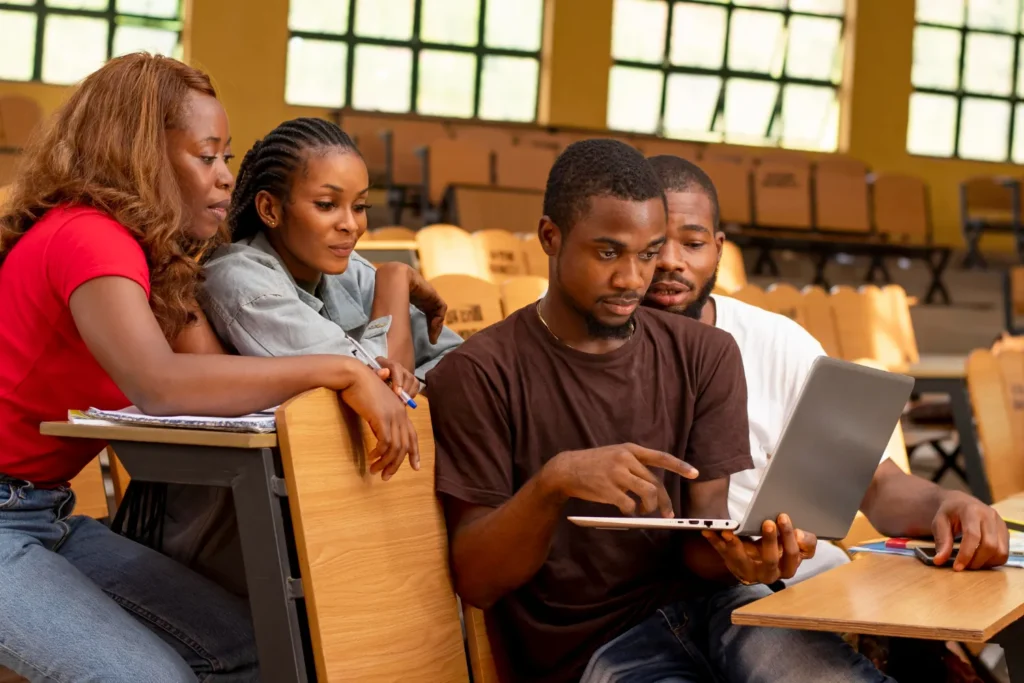
Collaboration is another important characteristic of an innovative classroom. Students are encouraged to work together, share ideas, and support each other in their learning. When students collaborate, it helps the classroom lessons to sticks, since students will be learning from both the instructor and their peers. Collaboration can take many forms, such as group projects, peer tutoring, and group discussions.
Teachers in an innovative classroom also often collaborate with each other as well, sharing best practices and working together to create engaging and effective learning experiences for their students.
A focus on student-centred learning is also an essential characteristic of an innovative classroom. This means that students are at the centre of the learning process, and that their needs and interests are taken into account when planning and delivering instruction. In a student-centred classroom, the teacher acts as a facilitator, guiding students through the learning process and helping them to make connections and apply their knowledge to real-world situations. Students are given the opportunity to take ownership of their own learning, setting goals and tracking their progress.
An innovative classroom encourages teachers to experiment and take risks in order to teach students as well as possible. This might involve experimenting with new teaching methods or technologies to tackle a difficult problem. It could also involve assigning challenging projects that force students out of their comfort zones, to help lessons turn from lectures to true understanding.
Teachers in an innovative classroom also encourage their students to take risks, helping them to develop resilience and a growth mindset. They are less concerned with getting every answer correct and are more concerned with teaching students to apply their knowledge confidently.
This is an environment where both teachers and students are not afraid to try new things and are willing to take risks in order to achieve their goals.
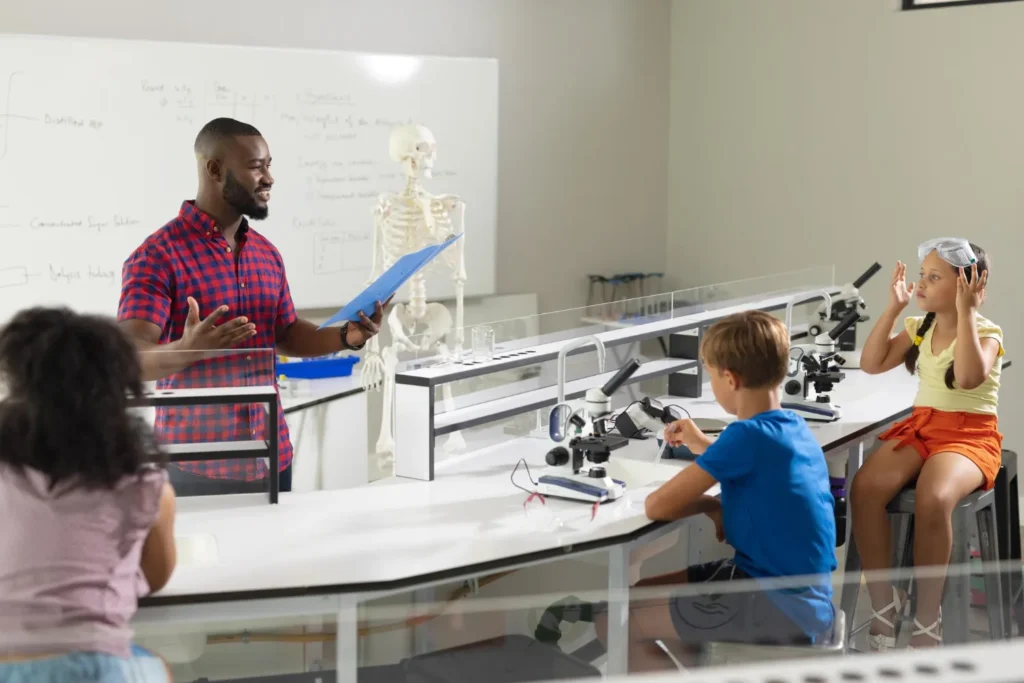
Another important characteristic of an innovative classroom is that it fosters creativity and critical thinking. Teachers in an innovative classroom encourage their students to think outside the box and approach problems and tasks in new ways.
Assignments are set up to allow students to come up with their own solutions that lead to the desired result. They often incorporate real-world problems and challenges into the curriculum, helping students to develop their critical thinking skills and apply their knowledge to real-world situations. This aids in the transitions from studying to working.
Innovative classrooms are inclusive and respectful of all students. Teachers in an innovative classroom are committed to providing a safe and welcoming environment for all students. They work hard to create a curriculum that considers the diverse backgrounds and experiences of their students.
Teachers also make a point of building positive relationships with their students. This helps to create an atmosphere of mutual respect and trust, where students and teachers listen to each other and work together towards a better education.
Inclusive environments are especially helpful for students with special needs. Instead of being left behind or punished when they have difficulties with traditional teaching methods, these students are able to thrive as their needs are accommodated in teaching plans and classroom environments.
An innovative classroom is a dynamic and ever-changing space where creativity, critical thinking, and student-centred learning are encouraged. It’s a place where students are empowered to take ownership of their own learning and where teachers act as facilitators, guiding students through the learning process and helping them to make connections and apply their knowledge to real-world situations. Studies show that students who learn in innovative classrooms often come out with a better understanding of how to apply their knowledge. They can more easily advance to higher education, and they are better prepared for diverse working environments.
Online learning has become increasingly popular in recent years, with more and more students opting for online courses and degree programs. While there are many advantages to online learning, there are also some disadvantages that must be considered.
Let’s explore the advantages and disadvantages of online learning, in order to better understand the benefits and limitations of this mode of education.
One of the biggest advantages of online learning is the flexibility that it offers. Students who choose to take online courses can often do so at their own pace, on their own schedule. This is particularly beneficial for students who are working full-time, who have families to take care of, or who have busy schedules that cannot accommodate strict timetables.
Online learning also helps students who live in remote areas and cannot easily access traditional brick-and-mortar classrooms. They have the flexibility to attend educational institutions that may have been difficult to reach for regular classes at specific times.
Another advantage of online learning is the cost. Online courses and degree programs are often more affordable than traditional in-person classes, as they do not require the same level of overhead costs. This can be especially beneficial for students who are on a tight budget or who are looking to save money on their education.
Students also cut down on the costs associated with attending normal classes. This can include the cost of physical books, transport to and from classes, or accommodation nearby. While there are some costs associated with online learning, such as internet access and digital books, the costs are usually lower overall.
Online learning offers a wider variety of options for students. With so many online programs and courses available, students can choose from a wide range of subjects and disciplines. This can be especially beneficial for students who are looking to explore new areas of study or who are looking to gain skills in a specific field. Not all study programs are available online, but there’s enough variety for students to find a good course in their industry.
Additionally, online programs and courses can be accessed from anywhere in the world, which makes them an ideal option for students who live in remote areas or who are looking to study abroad. Studying online opens up the possibility to enroll in courses that are only offered by specific institutions, helping students get an education that’s better tailored to their needs.

Despite the many advantages of online learning, there are also some disadvantages that must be considered.
One of the biggest disadvantages is the lack of face-to-face interaction. Online learning can be isolating since students do not have the same opportunities to connect with their classmates and instructors as they would in a traditional classroom setting. This isolation can be especially challenging for students who are introverted or who have difficulty connecting with others.
Additionally, online learning can be less interactive than traditional in-person classes, which can make it difficult for students to stay engaged and motivated. There are fewer opportunities for students to learn from each other, ask questions to their instructors, or collaborate on group projects.
Another disadvantage of online learning is that it can be more difficult to stay focused and on task. Without the structure and accountability of a traditional classroom setting, it can be easy for students to become distracted and fall behind on their coursework.
This can be especially challenging for students who are easily distracted or who have difficulty staying organized. Home environments aren’t always ideal for learning. They can be busy or loud, and the student may have other responsibilities that can interrupt their studies. Without a framework to keep students focused, it may be difficult for some students to be consistent in their attendance, coursework, and assignments.
Finally, online learning can be less personalized than traditional in-person classes. While online courses and programs may offer a wide range of options and resources, they can also be less tailored to the individual needs of students. This can be especially challenging for students who have specific learning needs or who require additional support.
Online learning has many advantages, including flexibility, cost-effectiveness, and a wide range of options. However, there are also some disadvantages that must be considered, such as the lack of face-to-face interaction, the difficulty in staying focused, and the lack of personalization.
Ultimately, whether online learning is right for you or not will depend on your individual needs and preferences. It’s important to weigh the pros and cons carefully before making a decision about whether or not to pursue online learning.
Google Slides is a powerful tool that can help students organize their research and present it in an effective, visually appealing way. It’s simpler to use than many other slideshow programs and is 100% free for everyone.
Here are a few ways that students can use Google Slides when organizing their research.
As the students are creating a slideshow, they can get an overview of everything they’ve made and jump to specific parts of the slideshow through the outline view. When there’s a lot of research content to summarize, it’s helpful for students to start with a comprehensive outline that they can then fill in with more information as they go.
Outlining also allows students to organize research into different sections, making it easier to navigate and understand. This is especially important when it comes time to present their findings, as it’s easier for them to jump around to different points of the presentation when answering questions or emphasizing a specific point.
Google Slides allows students to easily insert links, images, and other multimedia into their presentations. This can be a great way to organize sources and make them easily accessible to the audience. If people are viewing the presentation online, they can click directly on these resources to view the linked webpages themselves.
Another option is to record references through the built-in sources tab and insert them into the slides in whichever format is required. A references page with proper academic citations can be generated and added to the end of the slideshow, or references can be added to the bottom of each slide as footnotes.

Google Slides allows multiple people to work on a presentation at the same time, making it a great tool for group projects. This can be especially useful for students who are working on a research paper or presentation together.
While students do need access to the internet to edit presentations, they can work together from anywhere. They don’t need to be together on the same network to edit simultaneously.
There’s also a feature that allows students to comment on specific slides or elements anywhere in the presentation. This gives students the ability to make notes on for each other to edit at different times, or to note any ideas or changes they have directly in the presentation itself.
Google Slides can be used to create professional-looking presentations to showcase research findings. This can be a great way to present research to a class or at a conference. Even if students are not experienced in creating attractive presentations, there are simple templates available to help them with designing and structuring information.
Because Google Slides is a web-based program, students only need a computer with internet access to get to their presentation. There’s no need to download or install a specific file or program before presenting.
If internet access is an issue where students are presenting, Google Slides presentations can be made available offline or can be downloaded for use with an offline presenting program as well. All presentations can be downloaded in a variety of formats that work with other programs, depending on what’s needed.
Google Slides also allows for easy sharing and accessibility, so that students can share their research with their classmates, professor, or other researchers. This can be especially helpful for students who are working on a research project with people from different locations.
Files can be shared with different permissions as well, allowing students to specify what the receiver is allowed to do on the presentation. Google Slides presentations can be shared with editing permissions, viewing permissions, or ownership permissions, allowing those who made the presentation to have full control over who can modify the document.
With these features, students can effectively organize their research and present it in a clear, professional manner. By collaborating and sharing their research with others, students can gain valuable feedback and insights that help them improve their research and presentation skills.
Google Slides is a great tool for students to use when working on research projects, group projects, and presentations. It’s an excellent free alternative to programs like Microsoft PowerPoint or Prezi, two of the top competitors.
Teaching math to children can be a challenging task for educators and parents. Math is often seen as a dry and boring subject, and it can be difficult to make it fun and engaging for children. However, with the right approach and techniques, it’s possible to make math an exciting and enjoyable experience for kids. In this article, we will discuss ten fun and engaging ways to teach math to kids.
Bilingual education has been a topic of much debate in recent years, with many educators and parents questioning the benefits of teaching children a second language. However, the evidence is clear that bilingual education has numerous benefits for children, both in terms of academic achievement and personal development.
One of the most obvious benefits of bilingual education is the improvement in academic achievement. Studies have shown that bilingual children have better cognitive abilities, such as problem-solving, critical thinking, and multitasking. These skills are particularly important in today’s globalized world, where children need to be able to think critically and adapt to changing circumstances. Additionally, bilingual children have been found to have better memory skills, which can help them in subjects like history, science, and mathematics.
Another benefit of bilingual education is the increased cultural understanding and appreciation. Learning a second language allows children to understand and appreciate the culture of the people who speak that language. This can help children develop a more tolerant and accepting attitude toward other cultures and can also help them to appreciate their own culture more. Furthermore, learning a second language can also open up new opportunities for children, such as being able to travel, work, or study abroad.
Bilingual education also has personal benefits for children. For example, learning a second language can improve self-esteem, self-confidence, and self-awareness. Children who can speak more than one language often feel a sense of pride in their abilities. They can connect with more people and take part in different cultures, which can be very fulfilling. Bilingual children have been found to be more open-minded and adaptable, which can be useful in many different situations.
Lastly, bilingual education can also have economic benefits. In today’s globalized world, being able to speak more than one language is becoming increasingly important in the job market. Many employers are looking for candidates who can speak more than one language, as they’re able to communicate with a wider range of people and can be more effective in global business. Additionally, research has shown that bilingual workers earn more money than monolingual workers.
Bilingual education has numerous benefits for children, both academically and personally. It can improve cognitive abilities, cultural understanding and appreciation, self-esteem and self-awareness, and can open up new opportunities in the future. With the world becoming more and more interconnected, learning a second language gives children the skills they need to succeed. Every child should have the opportunity to learn a second language, and bilingual education should be made available to all children. This way, they will be well-equipped to succeed in the 21st century and beyond.
Reading and writing are essential skills necessary for academic and personal success. They are the foundation of education and the key to unlocking a world of knowledge and understanding. However, for many students, building a strong foundation in reading and writing can be a challenging task. This is because reading and writing require not only knowledge of the mechanics of the language, but also the ability to think critically and communicate effectively. Because of the importance of these skills, there are strategies that can help students develop a strong foundation in reading and writing.
The first step in building a strong foundation in reading and writing is to develop a love for reading and writing. This can be achieved by providing students with a wide range of reading materials that are both interesting and challenging. Both fiction and non-fiction books, magazines, newspapers, and online resources should be included. By providing students with a variety of reading materials, they will be exposed to different styles of writing and will develop a better understanding of the structure and organization of different types of texts. Additionally, by giving students the freedom to read something they enjoy, students will be more likely to develop a love for reading, which will make them more motivated to improve their skills.
The next step in building a strong foundation in reading and writing is to teach students the mechanics of the language. Teaching them how to read and write effectively includes instruction in grammar, punctuation, and spelling. This is important because it helps students understand the structure of the language, which will make it easier for them to read and write. Additionally, teaching students the mechanics of the language will help them develop the skills they need to communicate effectively, which is essential for academic and personal success.
In addition to teaching the mechanics of the language, it’s also important to teach students how to think critically and communicate effectively. Students should learn how to analyse texts, make connections between different texts, and express their thoughts and ideas in writing. By teaching students how to think critically and communicate effectively, they will be better equipped to understand and engage with the world around them. Additionally, by developing their critical thinking and communication skills, students will be better prepared for academic and professional success.
One of the most effective strategies for building a strong foundation in reading and writing is to provide students with regular practice and feedback. This can include simple daily reading and writing activities, as well as regular assessments that provide students with feedback on their performance. By providing students with regular practice and feedback, they will be able to identify areas where they need improvement and work to develop their skills. Additionally, they’ll be able to see their progress over time, which will help them stay motivated and engaged.
Another effective strategy for building a strong foundation in reading and writing is to provide students with opportunities to work in small groups. This can include book clubs, writing groups, or peer editing groups. By working in small groups, students will be able to share their thoughts and ideas with their friends and peers, which will help them develop their critical thinking and communication skills. Additionally, by working in small groups, students will be able to learn from their peers and receive feedback on their work.
Building a strong foundation in reading and writing is essential for academic and personal success. It requires developing a love for reading and writing, teaching the mechanics of the language, and teaching students how to think critically and communicate effectively. By implementing these strategies, students will be able to develop the skills they need to be successful in school and in life.
Creating an inclusive classroom is essential for providing an equal opportunity for all students to learn and succeed. An inclusive classroom is one where all students feel safe, respected, and valued, regardless of their race, ethnicity, gender, religion, or any other characteristic that might make them different from their peers.
To create an inclusive classroom, educators must recognize and acknowledge the presence of diversity within the classroom. This means that educators must be aware of the different backgrounds, cultures, and experiences that students bring with them to the classroom. This awareness can be achieved through professional development, cultural competency training, or other forms of education.
Since the goal is to acknowledge different backgrounds, needs, and cultures of the students in the class, educators should not make any assumptions about students. Once educators are aware of the diversity within their classroom, they can begin to create a curriculum that reflects and celebrates this diversity.
Just as important as acknowledging diversity, educators must foster a classroom environment that’s safe for all students and respectful of all backgrounds. This means that educators must establish clear expectations and rules that promote positive behaviour and discourage bullying and discrimination.
While teachers have some control over what happens in their classrooms, they cannot control what happens to students outside of the class. Give students a haven where they can learn and interact with others without fear of discrimination. Educators can create a safe environment for all students by providing resources and support for students who may be experiencing bullying or discrimination.
Another way to promote inclusivity in the classroom is to provide opportunities for students to learn about and interact with different cultures and perspectives. This can be achieved through the use of multicultural literature, field trips, and guest speakers.
When students lack understanding about others, they are more likely to discriminate against them, whether intentionally or not. Educators can foster a sense of empathy for others by educating students about different people groups and allowing students to tell their own stories.
Educators can also provide opportunities for students to collaborate and work with their peers from different backgrounds. This helps to build understanding and respect for diversity and promotes a sense of belonging for all students.
Additionaly, inclusive classroom environments provide support for students who may need additional assistance. There cannot be true diversity if students with special needs are not accommodated. This can be achieved through simple modifications to the lessons, such as extra time for assignments or the use of assistive technology.
Educators can also provide support by creating a learning environment that is accessible to all students, regardless of their abilities. Examples of this might be setting up special seating for students with movement disabilities or creating lessons that utilize multiple forms of teaching rather than just lectures. The more flexibility that instructors can offer, the more students will be able to thrive in their classrooms.
Finally, creating opportunities for students to lead and take ownership of their learning promotes inclusivity in the classroom. Educators can do this by providing opportunities for students to participate in leadership roles, such as class representatives, or by providing opportunities for students to design and conduct their own research projects.
Allowing students to participate in leadership roles gives them more freedom to express their own ideas in a safe and controlled environment. This helps to build confidence and self-esteem and promotes a sense of belonging for all students as they learn to work together with their peers and consider each other in decision-making.
Creating an inclusive classroom provides an equal opportunity for all students to learn and succeed, regardless of their background or abilities. Students will be able to take strides in their education without fear of discrimination, knowing their teachers and peers will be supportive.
By creating an inclusive classroom, educators can ensure that all students feel safe, respected, and valued, and have the opportunity to reach their full potential. These 5 actions are only part of what it takes to create and maintain an inclusive classroom environment, but by starting with the foundational changes, educators can begin to see a difference in their classrooms.